Handicap bathroom showers can be a plus for people with disabilities. Not only is the design of this type of bath more accessible, but it also means that there are no steps to get in and out of the tub/shower area. Learn how you can make your bathroom safer by installing one today.
The bathroom is one of the essential areas in your home. It’s also where you prepare for the rest of your day, so making the process as comfortable and easy as possible is essential. For example, suppose you have a disability that makes it difficult or impossible to walk or stand up properly. In that case, handicapped bathroom showers can be a plus.
Handicap Showers Are On The Rise
One of the great ways to make your bathroom more accessible is by installing a handicapped shower. Generally, a handicap shower is large enough for an adult in a wheelchair to use, even if they are immobile below the waist.
For example, many handicap showers have seats or benches that allow you to sit down comfortably while using them. The handicap showers also often have grab bars that you can hold onto while bathing or showering. That makes it easier to stand up if your legs are hurting too badly for you to walk.
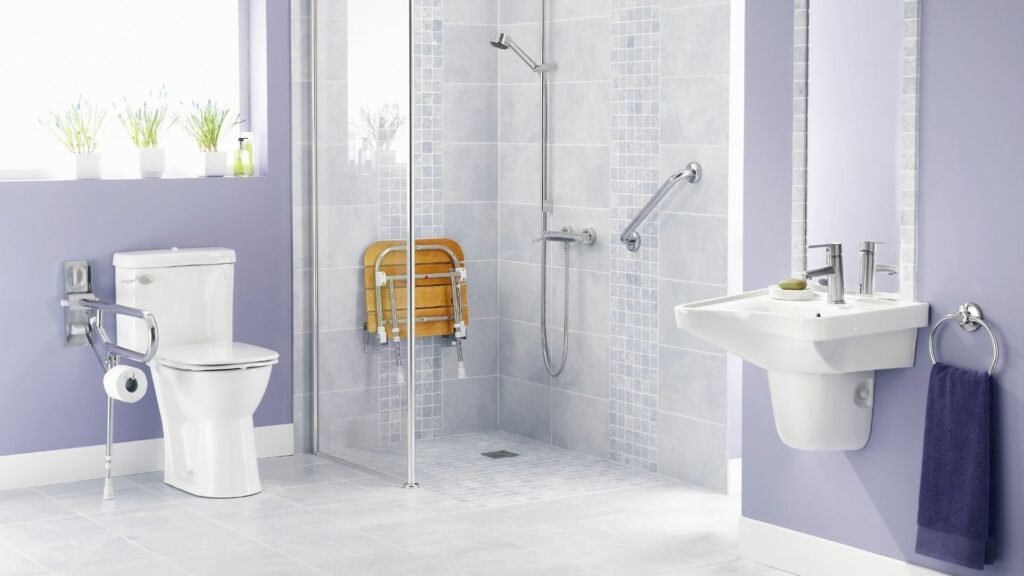
Handicap Bathroom Showers Make Life Easier
It’s imperative to make the handicapped bathroom easy and accessible for people with disabilities, and handicap showers can do just that.
For the disabled, life is difficult enough without navigating a standard-sized shower.
However, handicap showers are beneficial to more than just those with disabilities.
For example, handicap showers can be great if you have a new baby who needs to bathe more often than usual. However, you don’t want your regular bathing area to get all slippery and dangerous with soap suds on the floor every day.
A handicap shower is also great if you need to bathe a child or older adult who cannot stand up in the standard-sized shower area. It’s much easier and safer for everyone involved in handicap showers.
How do you make a handicap-accessible shower?
The handicap showers are easy to install in most bathrooms. They also make the bathroom safer for everyone involved, always great.
To make handicap accessible showers, you need to remove existing shower stalls or bathtubs that were not initially handicapped friendly. You then have to install the grab bars, benches, and seats necessary to make your handicap-accessible shower.
Handicap bathrooms can take a lot of stress off your shoulders and life in general and should be a top priority for everyone.
When you need a handicapped bathroom instead of the standard-sized ones, make it as pleasant and user-friendly as possible. Nobody wants their bathroom or shower to be complicated or dangerous, especially those with disabilities.
That’s why including handicapped showers in your home is one of the best things you can do.
What is the minimum size for a handicapped shower?
The minimum size for a handicapped bathroom is 61 inches, but 61 by 30 is better. That allows about 36 inches of width inside the shower and wheelchair or walker space in front of it. Also, allow room on each side of the wheelchair for maneuverability, preferably about 18 inches.
Follow the ADA measurement guidelines.
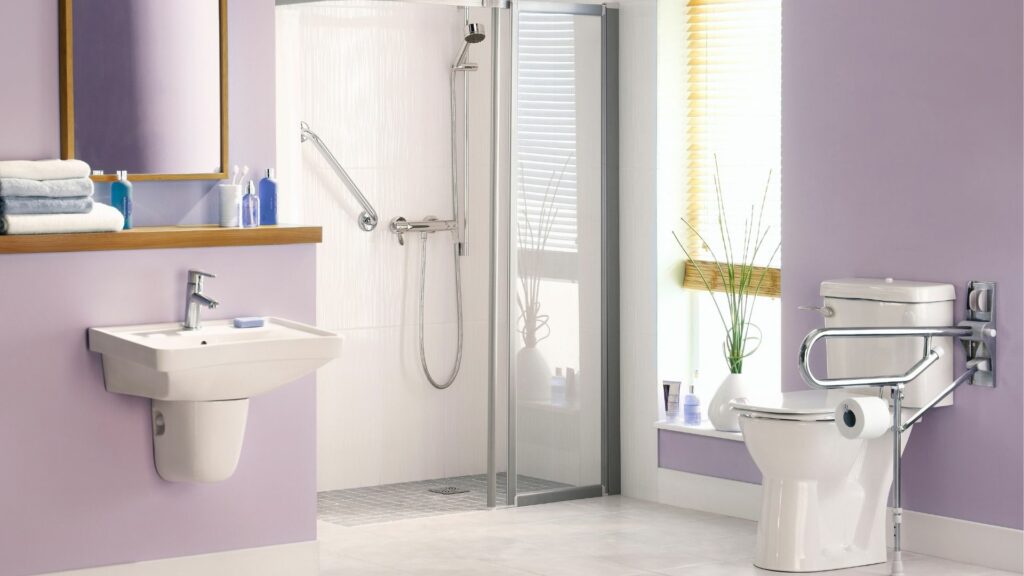
What are some advantages to having a handicapped shower?
Some advantages to having a handicapped shower are that it is much safer, especially for small children. Another advantage is that you do not need to mess around with adding shower chairs or soap dishes, both of which can be dangerous in the wrong hands.
Having your bathroom set up for handicap accessibility means less work on your end and more independence for everyone in your household.
What is the difference between a handicapped bathtub and a handicapped shower?
A handicapped bathtub is basically like a standard tub, except it’s more significant so that someone in a wheelchair can fit inside it.
With a handicapped bathtub, you can sit and relax with your feet up if that is what you need to do to feel better. With a handicap shower, there are benches and other smaller versions of the equipment found in full-sized showers. It is easier and safer for everyone involved.
How much is a handicapped shower?
A handicapped shower should cost about $1,500 to $4,000 for materials and installation. The price depends on whether you purchase a ready-made unit or custom designed.
What Types of Accessories are Available for an Accessible Shower?
There are many different types of accessories for an accessible shower. The common ones include roll-in showers, low step-in showers, and fittings for grab bars and transfer walls. You can also purchase shower seats and benches that will allow you to sit down instead of standing up while bathing or cleaning yourself.
Roll-in Showers:
Roll-in showers are the most common and will probably be ideal for your needs. They allow you to roll into a fully accessible shower with no threshold and only a single level floor.
Low Step In Showers:
Lowstep-in showers are great for those who use their legs but not enough to quickly lower themselves onto the regular floor. The shower area consists of a small step-in area that allows users to enter, lower themselves onto the seat, and rise back up.
While there is no standard layout for showers with grab bars, some people may need them on both sides or specific areas of their wall.
Safety Rails and Grab Bars:
Grab bars can help those who cannot control their balance very well. The grab bar gives the user something to hold onto as they lower themselves into the shower or stand up out of it.
They can be stainless steel or plastic molded into different shapes that fit your needs. Many come with a no-slip grip.
Shower Seat or Bench:
It may be beneficial to install a shower seat or bench if you find it challenging to sit down in the tub. There are also bath benches that fit over the side of your standard tub and can hold up to 400 pounds.
A shower seat is a must-have for those who have difficulty standing up or moving around. A bench can also be helpful to rest on before you feel ready to stand up again.
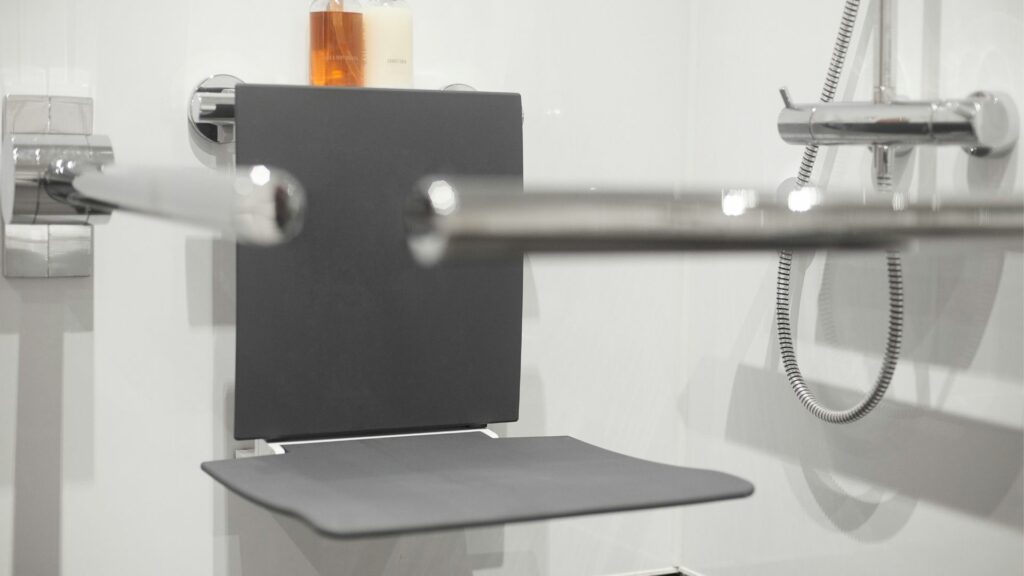
Hand-held Shower Head:
If you would like, you may also include a handheld showerhead with an adjustable angle for ease of use.
A handheld showerhead is a great tool because it allows you to remain in your wheelchair while showering.
The best thing about having an accessible bathroom or handicap bathroom showers is that they don’t have to be that expensive or unattractive.
How high should my shower head be?
You should generally try to put the showerhead at about shoulder height for ease of use.
If you are using a shower chair, install the head lower.
Soap – Shampoo Dispensers:
If you install a built-in soap dish, make sure it is firmly attached to the wall. Usually, the best way to do this is by screwing it in with large washers or brackets underneath. Avoid adhesive versions because they cannot support your weight.
Towel Holder:
Having a towel bar within easy reach means you won’t have to try and balance a wet towel on your way out. However, keep in mind that too much weight on the towel bar can cause it to detach from the wall, so make sure you buy one that is firmly attached and doesn’t wobble.
You may want to consider installing a grab bar made for hanging towels.
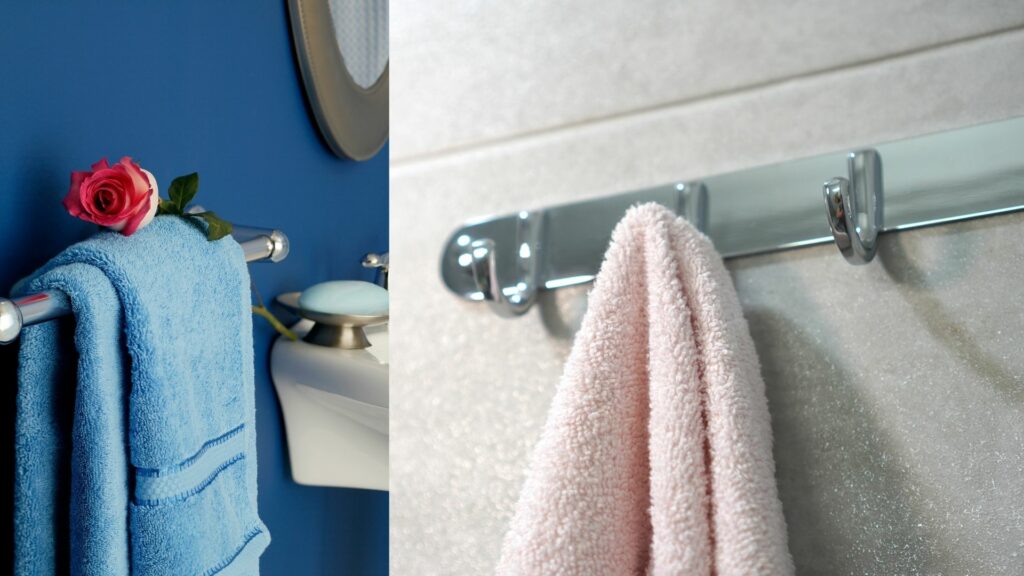
Shower Curtain:
You may want a shower curtain to keep the water from spraying all over the floor. Make sure it is weighted at the bottom, so you will not have to worry about water spilling out of the shower.
What type of bathroom should I remodel for handicap showers?
You should always look at your budget and what features would be most beneficial when choosing a type of bathroom to remodel. For example, these are some things to consider when remodeling your bathroom for a handicapped shower.
Where should I position my grab bar?
Grab bars are installed near the toilet, tub/shower, and sink. They should be placed below your grip when seated or standing for easy reach. Remember that they are only to provide balance, not strength.
Where should I put my soap dispenser?
It would help if you always tried to put your soap dispenser within easy reach. For example, you may want one on a swinging arm near the edge of the shower.
How should I arrange my towels?
It will help if you keep your towels within easy reach of the shower. You can choose to have a separate towel bar or rod for your wet towels but ensure it is securely attached to the wall.
Your goal with arranging your towels is to make sure you can easily access them when you are getting out of the shower or bathtub. Place them somewhere that you won’t have to stretch or strain.
Where should I position my shower seat?
When deciding where to put your shower seat, think about the room’s features and what would be most beneficial to you.
Keep in mind that if it is too far back against the wall, it may be difficult for you to reach the handheld showerhead when sitting down.
What kind of flooring should I choose?
When choosing shower flooring, your primary concern is making sure it is slip-proof and easily washed. You can use rubber mats or non-slip decals on top of the tile to be slip-proof.

Where should I install a bench for sitting down, and what height should it be?
You should place your bath bench on the same side as your grab bar and make sure it is at a height that is comfortable for you.
This will depend entirely on your needs.
What accessories should I include?
When choosing accessories for your bathroom, you should always think about what features would be most beneficial to you.
If your bathroom does not have a window, installing an exhaust fan may also benefit you.
Where can I find wheelchair-accessible fixtures that are adequately priced?
You can find wheelchair-accessible fixtures that are reasonably priced online. These stores will also have guides to help you choose the right fixtures for your bathroom.
How do I stay safe while using my handicapped shower?
When using a handicap shower, you should always use your seat or bench. Make sure it is on the same side as your grab bar.
You should keep the shower door open at all times while you are using it. This way, if you do slip and fall, there’s less chance of injury because you can just slide down to the floor along with your bath bench.
Once you have finished bathing, close your shower curtain or door so that the water doesn’t drip on the floor.
Watch the Renovating Process for a Handicap Bathroom
Handicapped Showers Are Just A Click Away
A handicap-accessible bathroom shower allows those with limited mobility to enjoy a comfortable and easy bathing experience.
Many companies are designing beautiful shower units that will blend seamlessly into your bathroom and allow you to wash up as anyone else would. No longer is it necessary for you to worry about getting hurt in the process of cleaning yourself up.
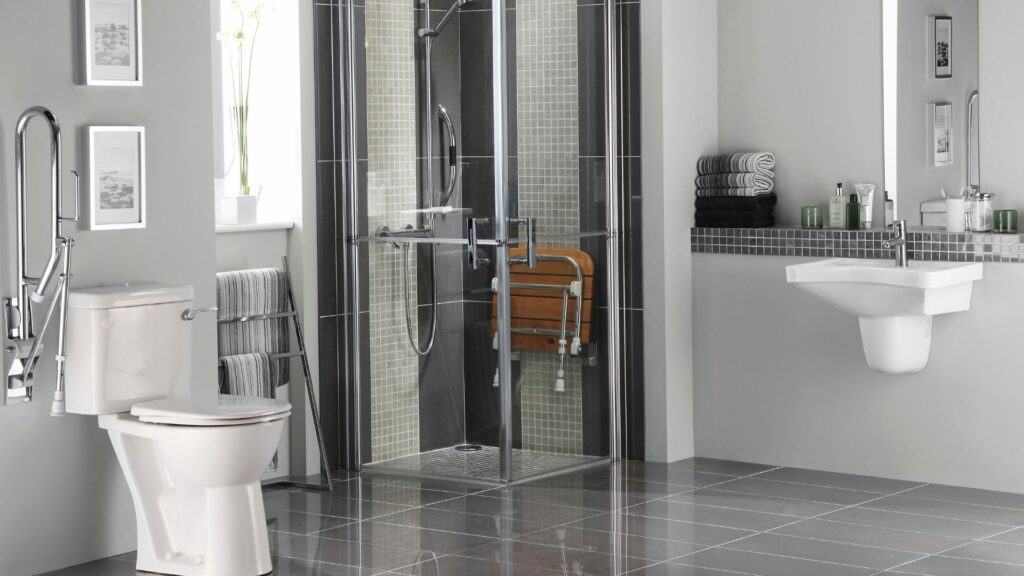
Conclusion
If you or someone you know has difficulty walking, a handicapped shower might be the perfect solution.
Handicap showers have seats or benches that allow you to sit down comfortably while using them.
The handicap showers also often have grab bars that you can hold onto while bathing or showering. That makes it easier to stand up if your legs are hurting too badly for you to walk.
With these features available in many different styles and colors, there is no reason not to design your handicapped bathroom shower.

